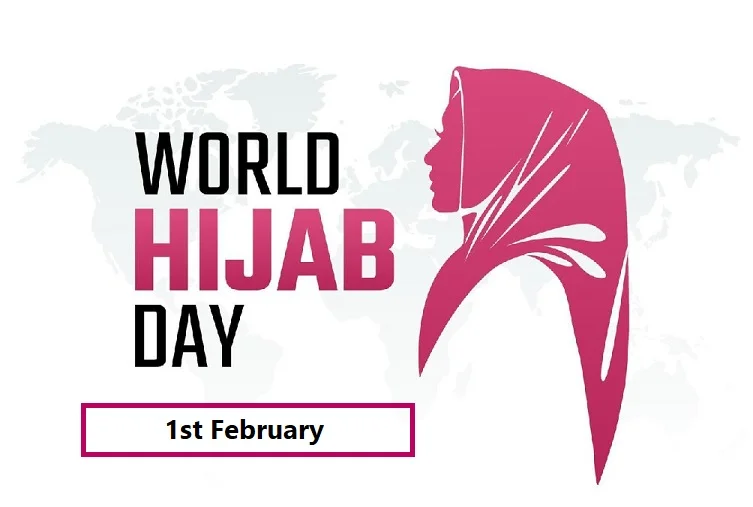World Hijab Day 2024: Lesser Known facts behind celebration of this day

A hijab is a piece of cloth worn by certain Muslim women when they are in the company of a man other than their close relatives. Every year on the first of February, Muslim women from 140 nations worldwide observe World Hijab Day.
Muslim women often wear the Hijab, ahead, and breast veil when they are in the company of men who are not members of their immediate family. A headscarf, the headscarf known as the Hijab, is a wall or a curtain. As a result of their wide variety, hijabs make excellent fashion statements.
The Hijab is obligatory only when a woman is among males who are not close family members, although many Muslim women prefer wearing one anyhow in order to foster a sense of cultural unity. Some people choose to wear a hijab because they believe it is a religious obligation.
World Hijab Day 2024 Date
A day set aside each year on the first of February to commemorate Muslim women who don the headscarf is known as World Hijab Day.
Women of all faiths and backgrounds are encouraged on this day to experiment with the Hijab. To retain their modesty, Muslim women wear the Hijab. Many women also use them to protect against unwanted male attention.
| Event name | Day | Date |
| World Hijab Day 2024 | Thursday | 1st February 2024 |
World Hijab Day History
The inaugural World Hijab Day was announced on the first of February, 2013, by Nazma Khan. Khan hails from New York City and is a Muslim lady. To promote religious tolerance and understanding, she allowed all women to wear the Hijab for a day.
It was difficult for Khan to go to school in New York City because she wore her headscarf when she was a little girl. In the hopes of ending this sort of prejudice, she created this day. There are presently 190 nations participating in World Hijab Day celebrations.
Theresa May attended a World Hijab Day ceremony at the House of Commons in 2017 in honor of New York State’s day declaration. There will be a National Hijab Day in the Philippines in 2021 to promote greater awareness and acceptance of Islamic heritage.
How to commemorate World Hijab Day 2024?
- Wearing a headscarf is a holy religious practice that roots in Islam. Get to know it better by reading up on its importance right now.
- Use your social media about what you’ve learned. To demonstrate your support for #WorldHijabDay, use the hashtag.
- An additional benefit of this holiday is learning more about Islam. You can also learn about other forms of headscarves, including the chador, the Shayla, the burka, the khimar, and even the niqab.
- The goal of World Hijab Day is to bring attention to issues facing Muslim women throughout the world. It reveals the impact on their daily lives in public perception.
- A chance to dispel misunderstandings about the Hijab is presented. The glorification of the headscarf makes it more approachable to non-Muslims.
Check: Islamic Calendar (Hijri Calendar)
Lesser Known Facts
- Customs, interpretation of literature, ethnicity, geographic region, and political system all have a role in how Hijabs are worn.
- Hee-jab is the correct pronunciation of the Hijab. The “h” in Hijab is pronounced like a whispered “h,” and the I is pronounced like the word “see,” with a double “e.”. In the second syllable, -jab, the word “jab” is pronounced with a more open “a” sound, like an “ah.”
- When in the presence of non-Mahram, Muslim women wear the Hijab (men that Muslim women cannot sit around them without wearing headscarves).
- After puberty, Muslim women begin wearing the Hijab. However, it is more customary for them to begin wearing it during their teenage years in Islam.
- Because of the ambiguity in Islamic holy texts about the issue of veils, many Muslim women choose to wear them. The Hijab, on the other hand, is mandated by law in areas like Iran and Indonesia’s Aceh Province.
- One example of a head covering is the niqab or the turban. Christian Nuns use an apostolic or epi mandylion to protect their heads from the sun and rain. Married Jewish women wear a tichel, also known as a mitpachat, to cover their heads. Hindu and Sikh women use dupattas to protect their heads from the sun and rain.
Check here: List of Important Days and Dates
FAQs
The inaugural World Hijab Day was announced on the first of February, 2013, by Nazma Khan. Khan hails from New York City and is a Muslim lady. To promote religious tolerance and understanding, she allowed all women to wear the Hijab for a day.
Since the first World Hijab Day was held in 2013 and is currently in its tenth year, more than 140 nations have participated in the celebration.
In February, 2013, Nazma Khan officially declared the inaugural World Hijab Day. An American Muslim woman named Nazma resides in New York City. By urging all women to wear a hijab for one day.




